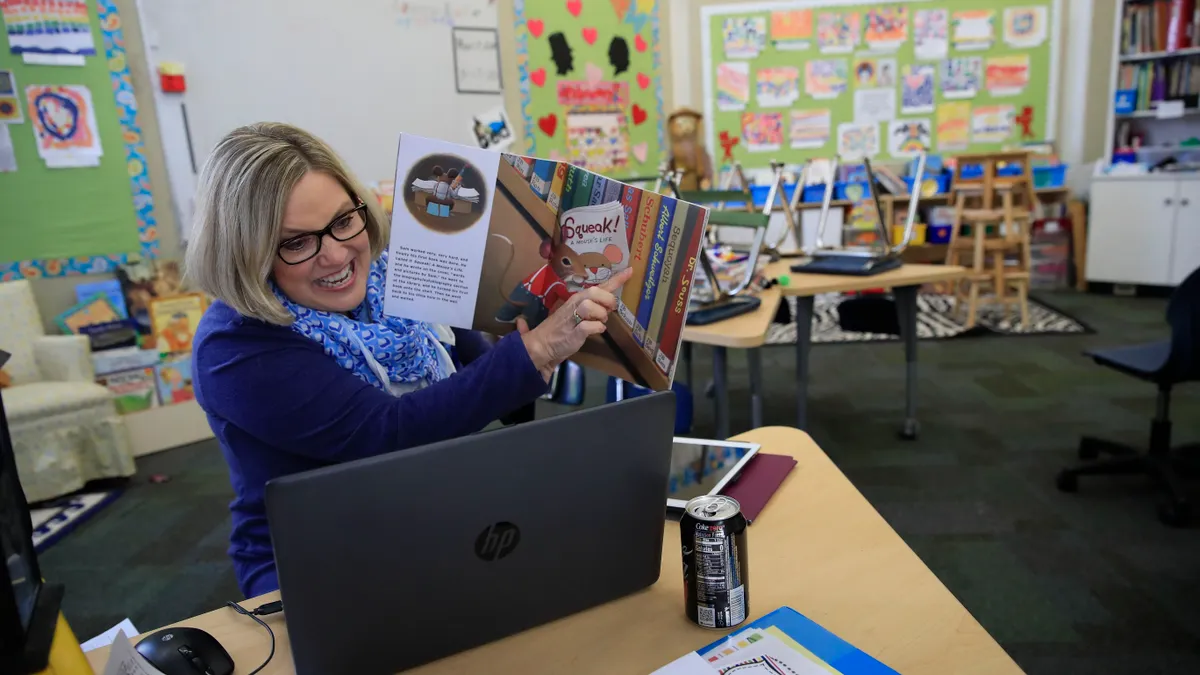Dive Brief:
-
Public schools were at a disadvantage in many areas when compared to private schools during the first phase of coronavirus shutdowns, new nationally representative data from the U.S. Department of Education’s National Center for Education Statistics shows.
-
While 58% of private school principals said their students could get internet service in spring 2020, only 4% of public school principals reported the same. Private school teachers were almost twice as likely (61% versus 32%) as public school teachers to say they had real-time interactions with a majority of their students.
-
Sixty-three percent of private school teachers reported real-time instruction that allowed students to ask questions through a video or audio call, compared to 47% of public school teachers. A slightly higher percentage of private schools used paper materials during distance learning than public schools (48% versus 41%).
Dive Insight:
Findings have shown the coronavirus pandemic and school shutdowns are disproportionately impacting students of color and lower-income students. However, data comparing how public schools fared versus their private counterparts is much more scarce.
The new data released by the department sheds light on the resources available to public schools and their students, as well as on employee experiences, when the pandemic first began.
“Students need equitable access to technological devices and a stable, reliable internet connection in order to participate in online learning,” said NCES Commissioner Peggy Carr in a statement. “This report shows that many students at both public and private schools struggled with technology during the first phases of the COVID-19 pandemic.”
However, public schools were more likely to help students connect to the internet for the distance learning the pandemic required.
According to the report, before the COVID-19 pandemic, 23% of public school principals reported their schools assigned a computer or digital device for each student to take home, while 14% of private school principals said the same.
During the pandemic, public school principals again reported assigning computers or digital devices to all students to take home at a higher rate than private school principals (45% versus 20%). Public school principals were also much more likely to say they sent home hotspots or other devices to help students connect to the internet, at 61% versus 9% for private schools.
“Principals around the country took extraordinary measures to get their students online during the pandemic,” Carr said, calling the pandemic an “unprecedented time.”
Yet despite the work principals put in to get students connected, there were also disparities between the employee experiences of public and private school teachers: Private school teachers were more than twice as likely as those in public schools to strongly agree they had the support and resources they needed to be effective, at 37% and 17%, respectively.
The flight of public school teachers from the profession in light of the pandemic and resulting burnout has raised alarms over the past two years, especially considering a teacher shortage that existed prior to spring 2020.
In addition, recent controversy over what’s taught in the classroom — including proposals to monitor and report teachers for discussing banned topics — could drive more teachers out of the profession, experts worry, at a time when students need more academic interventions.
“We need more resources, not less, to meet the needs of our students,” said Becky Pringle, president of the National Education Association, earlier this month.












